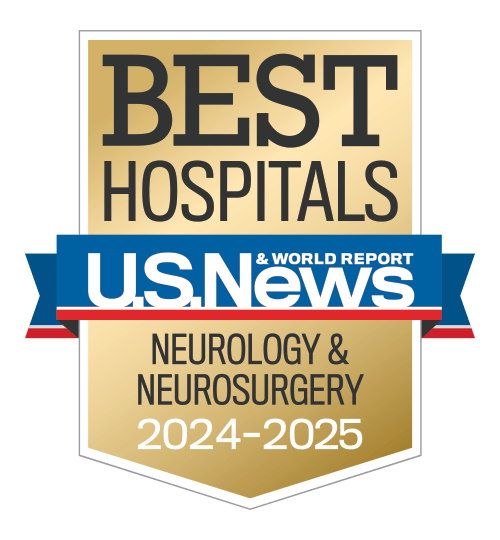Deep Brain Stimulation
University Hospitals physicians have been on the leading edge of deep brain stimulation (DBS) research since the treatment was first approved to treat movement disorders.
UH Cleveland Medical Center was ranked by U.S. News as one of the 50 Best Hospitals in the Nation for Neurology and Neurosurgery.
UH was the first site to receive FDA approval to test DBS as treatment for medically refractory Tourette’s syndrome. In 2004, UH became the first in North America to successfully use DBS for treatment of Tourette’s syndrome.
Tourette syndrome is a neurobehavioral disorder characterized by sudden, repetitive muscle movements (motor tics) and vocalizations (vocal tics). It often begins in childhood. By young adulthood the tics have usually diminished in frequency and severity. However, in some adults, like those that participated in this clinical trial, the tics become more disabling even with best medical therapy.
In November of 2007, a team of researchers at University Hospitals Cleveland Medical Center carried out the first randomized, double-blinded study of bilateral DBS of the thalamus for the treatment of medically refractory Tourette’s syndrome. Prior studies which suggested the efficacy of DBS in treating the disorder carried the baggage of being case studies or retrospective. This was the first completely experimentally sound paper supporting DBS for Tourette’s syndrome, despite the small sample size.
This first-of-its-kind study of five adults with Tourette’s syndrome determined that DBS can reduce tic frequency and severity in some people who have exhausted other medical treatments.
UH physicians continue to pioneer new advances in DBS with active research on dystonia (involuntary muscle contractions) and Parkinson’s disease, as well as other neurological conditions. The UH Neurological Institute is one of a select group of centers nationally doing surgical therapy for dystonia and has NIH-funded research investigating the mechanisms involved in the therapeutic benefit of DBS in dystonia.
Surgical Rehearsal Platform
The Latest Technology for Treating Neurological Conditions
Our team uses state-of-the-art technology and techniques to deliver advanced neurological care. Advanced technologies such as Gamma Knife, the NeuroBlate® System and proton therapy provide targeted treatment that can mean fewer complications and shorter recovery times.
Our Advanced TreatmentsNeurosurgeons at UH Cleveland Medical Center have helped develop a surgical rehearsal simulator that allows for interactive run-throughs of brain surgeries prior to complex procedures – such as implanting DBS devices and microsurgery for clipping brain aneurysms.
Led by UH Neurosurgeon-in-Chief Warren R. Selman, MD and developed by Cleveland-based Surgical Theater LLC, the Surgical Rehearsal Platform (SRP) uploads and transforms medical images, such as computed tomography (CT) and magnetic resonance imaging (MRI) scans, into life-like, dynamic and interactive 3-D models. SRP enables surgeons to plan and rehearse surgeries by seeing and interacting with an accurate replica of what they would experience when operating on the patient. The virtual tissues and blood vessels react realistically to actions taken by the surgeon, allowing the surgeon to make critical decisions in a risk-free environment before entering the operating room. The SRP also allows surgeons in different locations to connect virtually, share best practices and jointly perform a virtual surgery in a collaborative surgical theater.
Make an Appointment Today
Your health is important. Get expert care.
You can book an appointment with a UH Neurological expert close to home by calling 440-860-2177.
Virtual visits and virtual second opinions also are available. Learn more about virtual visit.
Patient Story
“When we walked out of the hospital, to the parking lot, we held hands for the first time in 8 years.”
Learn how Steve was able to control his Parkinson’s Tremors though the Deep Brain Stimulation Procedure at University Hospitals.



